Finally, its time to start doing some real traveling around Africa! The first of many big trips I’ll be doing around the continent no doubt. We planned for a 2 week safari I’m Kenya and Tanzania, finishing up on the beautiful beaches of Zanzibar. We had been planning this trip for a long time and the time was finally here. The highlights of this trip take you to the Masai Mara game reserve in Kenya, the Serengeti and Ngorogoro crater in Tanzania and some tropical beach time at the end in Zanzibar. For a two week trip, we would be able to see some of the most famous game reserves in the world, as well as one of the nicest beaches in the world. Winning all around. We booked this trip with Acacia Tours as an overland style trip.
13 Day Kenya, Tanzania and Zanzibar Overland – Facts
View Google Maps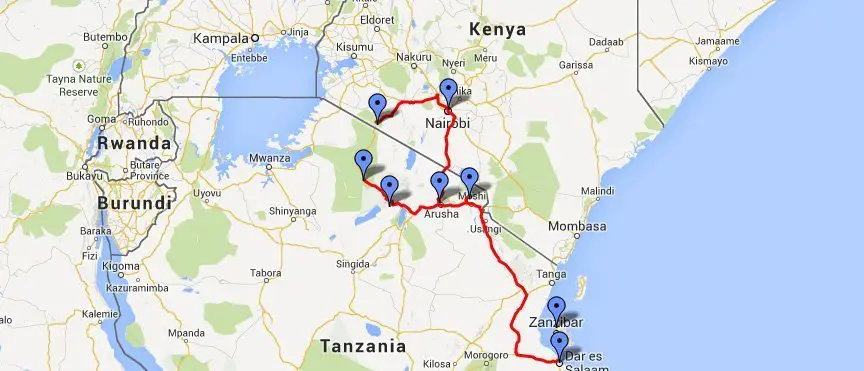 |
||||||||||||||||
|
Intro to overland tours
Overlanding is a term used for trips that drive from 1 destination to another stopping at various highlights. Overland in Africa usually entails traveling with other people, 17 in my case, and camping which is exactly like camping you did when you were a little kid, in a tent. At night, you’ll arrive at a designated camp site where you setup your tent and sleeping bag. Not all nights are camping however.
Sometimes you’ll be placed in a permanent tent or simple hostels during certain excursions. In the morning, you pack up the tent yourself, load it into the overland truck drive to the next destination. I know it doesn’t sound like a five star vacation but you are going into the wilderness with wild animals so you can’t be expecting the most luxurious accommodations. However if you have a lot of money to spend, there are other options as well as there are many lodges within the game reserves that are ultra luxurious, and will usually run you around 1000$ a night. There isn’t a whole lot of options in between though, so you almost have to do some sort of camping to go on a safari in these parts.
Nairobi to Cape Town
If you look at Acacia’s website, you’ll see the 13 day Kenya and Tanzania safari option, and you’ll also see a 43 day option from Nairobi to cape town. I always wondered to myself, who the hell actually does these kinds of trips for a month and a half! There’s no way anyone has that kind of vacation time in the world. I am mistaken. As soon as we met up with the group on day 1, six people that were going all the way to cape Town and another 3 going to Johannesburg. At this point, I realized that we were just doing the first leg of the trip and there were people that had the time to do a trip over a month long to my extreme envy. So when you’re booking a trip like this with acacia or any other operator, unless you’re doing the whole trip, you are in fact just doing a single leg of the trip and you can hop on and off any any point. The 43 day trip ends with Namibia and Cape Town but you can elect to do just that leg if you wanted to and you would be joining up with the people that had/started from Nairobi a month earlier. The tour operators are very flexible and even accommodate bespoke packages as long as there is room on the truck. It’s money for them in the end.
What is local payment?
I was surprised when I finally paid for my trip (8500 rand) that there was another fee of over a thousand american dollars. After doing some research, I found out that the fees in Rand only goes to the truck, gas, food, and paying your guides and the company. The “local payment” as the tour groups call it, is meant for your excursions like going on a safari to the Masai Mara or the Serengeti (paying for entrance fees and the tour guides), and whatever it costs to stay at one of the campsites. Technically, these things are all optional and you can elect not to pay the local payment and stay behind with the truck when the others go on a safari but then what’s the point of coming on this trip? They should just include the price all in so you don’t get excited for such a cheap price tag of 8500R.

Acacia was very flexible with our local payment as the original amount was 1170$ but because we wanted to leave the tour immediately upon arrival in Zanzibar, they took the hotel stays in Zanzibar out of our local payment so I ended up only paying 1050$.
American Dollars for Safaris
The local payment is paid in USD because dollars are accepted throughout Eastern Africa just as much as the local currency if not more so. The game reserves all quote their prices in USD because at the end of the day, it’s not Kenyan’s or Tanzania’s going on a safari. To them, dollars are worth more and foreigners can get it, even if they are not from America. You can still pay in local currency if you forgot to get dollars, bit they will make you pay whatever the forex bureaus are buying USD at which will be lower than spot it’s better to just get a lot of had before coming here.
New American Dollar bills
Another point of emphasis is make sure you get dollar bills that are POST 2006 bills! Our tour group didn’t accept some of the bills we had because pre 2006 bills are easier to forge! If you’re exchanging for USD outside of america (which was everyone on this trip), you’ll likely not need to worry because all the bills will be new but if you’re american, we obviously don’t care when the money is from so if I’d recommend going to the bank and asking for only post 2006 notes.
Its all about the Benjamin’s
If cash is king, then crisp american greenbacks are god. In Kenya and Tanzania, USD is as good of a substitute for their own currency as any and most people prefer to have US cash. The only country that I’ve seen like dollars more is Argentina who hoard more USD cash that any country aside from America. Argentina’s peso has also depreciated about 30% in the last year. People absolutely go crazy for US cash in East African nations and often you will see items with a price in local shillings, as well as one for USD and sometimes only in USD. We in fact, did not exchange for a single Kenyan shilling out while we were in Kenya because USD is just as good. We got some Tanzanian shillings while in Tanzania as we were there for much longer but this was unnecessary as well.
The Group

Overland tours in Africa will have between 10-24 people on a trip. You’re going to be traveling with these people for the next however many weeks and you will not be able to avoid talking to them. For these trips, who you’re traveling with will honestly be the difference between a good and great trip. If you’re not a social person, then this type of trip may not be your cup of tea. Luckily for us, our group was about as good of a group as you could ask for.
There are always many personalities in a travel group and you’ll have your socialites that want to talk, drink, and socialize with everyone, then the other end of the spectrum with people that do not talk at all, and everything in between. Our group was all so chilled and we got along so well that even if we drove for 9 hours in a day, or when our car broke down returning from the Serengeti to Arusha, we made the best out of it by playing drinking games or something. I love traveling in these large group settings because the people that go on these trips are so well traveled that it makes for endless conversation comparing your travels and having food for thought for future vacations. We ended up exchanging emails with many of them at the end of the trip and that’s how it should be.
These trips are meant for people of all ages (min 18) and our group ranged from 19 all the way to someone in their 50s doing the entire trip from Nairobi to cape town! We had people with different stories from all over the world. A few Brits, Aussies, New Zealanders, Canadians and a couple from Israel. We were, in fact, the only Americans on the trip and pretty much the only Americans we saw on the ENTIRE trip under the age of 60. Just goes to show how very untraveled we Americans are. It’s just not in the culture to travel like it is for the Aussies or Kiwis. Distance is not the issue either because we had more Canadians than Americans in our group! A country that we outnumber 10 to 1!
The truck and the crew

Get a good look at the ride you’ll be on for the next few weeks, its essentially a small semi with the back converted into a bus. There are 24 large storage boxes at the box, 1 per person to store all you’re bags. The seats are pretty standard with decent amount of legroom but just keep in mind, you’re going on a camping safari so it is not meant to be luxurious! For the excursions to the Masai Mara in Kenya and the Serengeti in Tanzania,we took smaller safari 4x4s as our truck would be too big to meander through bumpy dirt roads at these places so essentially,we were only in the truck when we were going from one place to the other on the main roads.
Our guides, Sam and Tony were some of the coolest people and certainly you couldn’t ask for better people to drive and take you on this trip. They had done the same route of Nairobi to cape Town and back to Nairobi countless times and were well known throughout the overlanding world. They were incredibly knowledgeable and easy to talk to about everything that combined with a good group of people on the trip, it made for an amazing time.
What to bring
Obviously, everyone will pack differently but here is a list of some must haves and some other things you wouldn’t think of.
- Sleeping Bag – This is a camping safari and you providing your own sleeping bag is a must unless you’re content with using your shirts as a blanket at night (it gets cold in some parts)
- Yellow Fever Vaccination – absolutely must have for this trip. Zanzibar will not let you in otherwise
- Travel Insurance
- Malaria tablets – Should definitely have these, especially once you get to Dar Es Salaam and the more tropical areas of the tour
- Small backpack – When you do your safaris to the Masai Mara and Serengeti, you will not take your entire bag as the trucks do not have enough space. A smaller bag will be necessary to carry a few change of clothes and toiletries.
- Bug repellent and sunscreen – It gets hot, you are on the equator after all…
- Sunglasses – Obviously you need these for the sun but these are also important for game drives. You’re driving on a dirt road and when you stand up in the car, dirt will fly at you.
- Earplugs – You’re camping with someone else and if they snore heavily, you’re screwed. Don’t risk it, get these.
- Good camera with great zoom – Pretty obvious. If you do not have one, make friends with the person with the biggest most badass looking camera and have them send you their pics.
Pre-Trip: A Day In Nairobi
Alas, finally on to the trip! The trip started on a Sunday morning so naturally, getting there before was on order. After some research on Nairobi and whether there was even anything to do there, TripAdvisor answered that question with a resounding no. None of the top things to do were even in Nairobi but rather parks and animal farms outside of the city. Therefore I booked a flight that got me the afternoon before, thinking I may as well walk around and do something as this would likely be the only day I’d ever be in Nairobi. After a quick 4 hour flight from OR Tambo, I had arrived on Kenya!
Country Facts – Kenya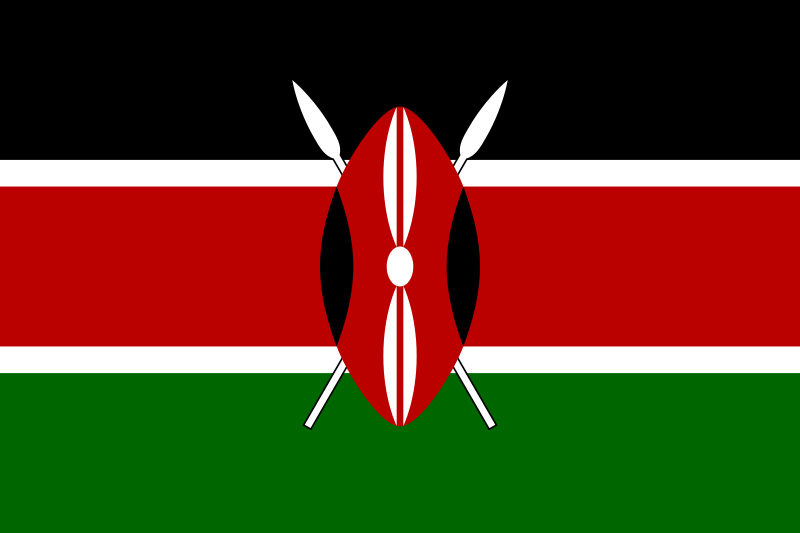
|
Getting in around from the Nairobi airport

Upon arrival, you’ll head through immigration which is a joke. All you’re doing here is just showing your passport, paying some cash to the government, and walking out. The officials didn’t say a word to me and just wanted me to pay the 50 USD for the Kenyan visa. Make sure you absolutely have USD, EUR, or GBP, as a south African couple behind me were told to go to the forex exchange in the airport to convert their rand. Also make sure to have exact change as they may not have change here. I had three 20s on me but they had no change and looked perfectly content to pocket the extra 10. Thankfully, an american couple was standing behind me and could break the bills.
Getting around the city

Well I can just copy and paste this section I’m about to write for every other city on Africa I visit. Being a poor 3rd world nation, Kenya has no mass transportation and there is no way to get to the city besides a taxi. If you’re poor and adventurous, perhaps try the bus but I don’t see myself taking a bus anywhere in Africa. It would be advisable to book a taxi online before you arrive so you can have someone waiting out front with your name but if not, there are plenty of cabs waiting here. Nothing is standardized in Kenya as far as cabs are concerned so make sure to negotiate a rate. For my cab ride to the city center of Nairobi, it was 20$. The hotel I booked offered airport transfers but for 40$! What a ripoff! They just want to take advantage of foreigners with dollars!
Where to stay and what to eat
There are plenty of hotels on Nairobi as it is the business capital of East Africa. I wanted to stay somewhere nice and centrally located as I wanted to check out the city and wanted to be close to the tour meet up point, a hotel down the street that received dreadful reviews. In hindsight, it was probably completely unnecessary as there really isn’t anything to see. Nevertheless, I booked a night at the Sarova Stanley which was a 5* hotel right on the middle of the business district. Place got good reviews on TripAdvisor and was affordable at about 150$ a night. The accommodations were good but nothing special. It certainly wouldn’t be a 5* hotel in most other countries.
There are some solid fine dining choices to be had in Nairobi. However, if you’re here for a day, I’d recommend making a reservation and getting out to the Carnivore. This is a Kenyan restaurant with a location in Johannesburg that I’ve visited. No trip to Africa is complete without gorging your heart out in exotic game meats that you’ll never find back home. This place is a bit out of the way but unlimited helpings of game meats like Zebra, Kudu, Warthog, Impala, and Giraffe highlight the menu make this place a worthwhile trek.
TIA
As soon as I got into my cab from the airport, it was clear that THIS is the Africa I had envisioned prior to moving to South Africa. SA is a complete anomaly and after visiting Kenya and Tanzania, it really goes to show how way ahead of the times South Africa is compared to the rest of its African peers. No longer do I see the BMWs and Audis en mass like I do in SA but rather, I see dirty streets with mud, old buildings and just conditions I thought I’d find when I moved to Africa. Not a bad thing at all, but it just hit me that this was finally Africa as I had pictured it which further cements my thinking that South Africa really isn’t “Africa” at all. If you’re South African and disagree, think of this. South Africans actually GO to the Kruger and other game reserves within the country. I’d say it’s at least half native South Africans vs foreigners. After finishing this trip however, you’d be hard pressed to find a single Kenyan the Mara or Tanzanian in the Serengeti that wasn’t sitting in the front left seat of the car.
Walking around Nairobi

Walking around the city center of Nairobi proved to be quite a pointless venture as the concierge at my hotel literally just told me to circle the block and come back. He was right. Nairobi certainly isn’t like the historic European capitals with a different sight worthy of asking a stranger to take a picture of you next to it at every corner. As soon as I walked out of the hotel, I was constantly pestered by people trying to sell me stuff which I suppose was because of how much I stood out walking by myself.
Nevertheless, I felt completely safe walking around during the day time. Given that I was the only foreigner walking the streets of downtown Nairobi by myself, I was surprised at how little stares I got. Seems that although Nairobi is not a Rainbow nation, it has caught up to modern times and seeing foreigners is no novelty anymore.

There is not much to walk to or see but if you are here, you may as well pay a visit to the Kenyatta International Conference Center. Jomo Kenyatta is what this building is named after as well as the International airport in Nairobi. This guy was the revolutionary figure of Kenya that led them to their independence from the British, not unlike that of Nelson Mandela and South Africa. The conference center isn’t much but there is a giant cylindrical building that you can go up and have panoramic views of the city. Unfortunately, this place closes at 6 and I just missed it. There is a small entrance fee of 5$ to go up so I suppose if you’re in the area, which I was told was one of the nicest areas in the city, a visit up this tower to soak in the views may be necessary.




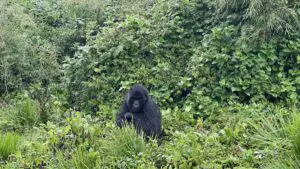
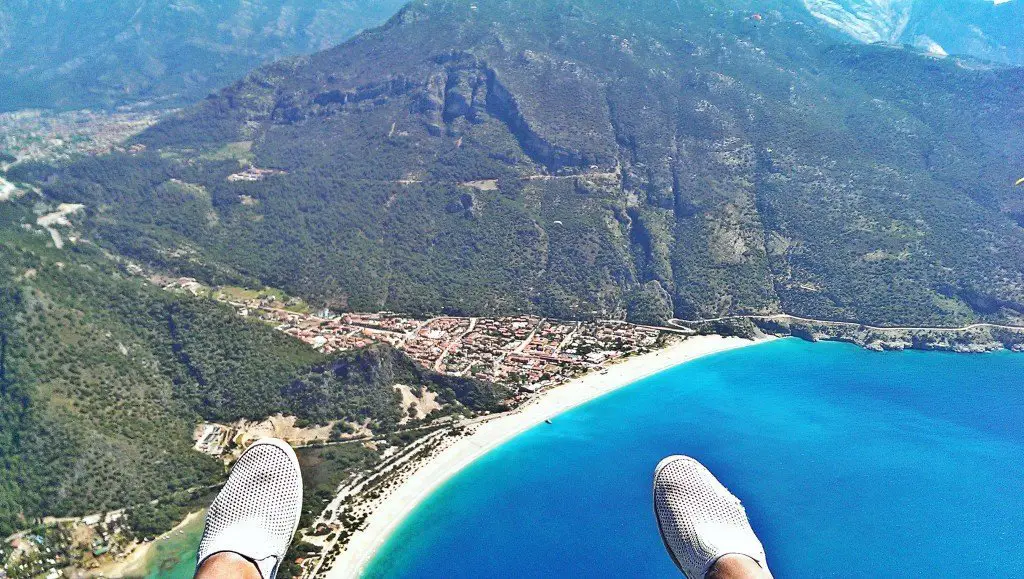
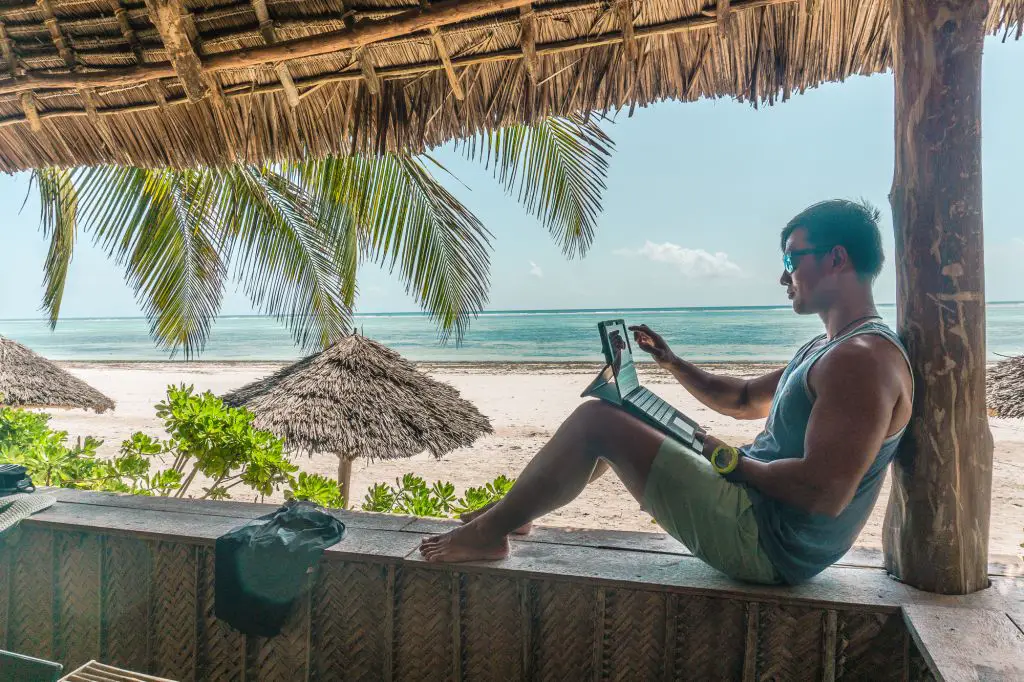
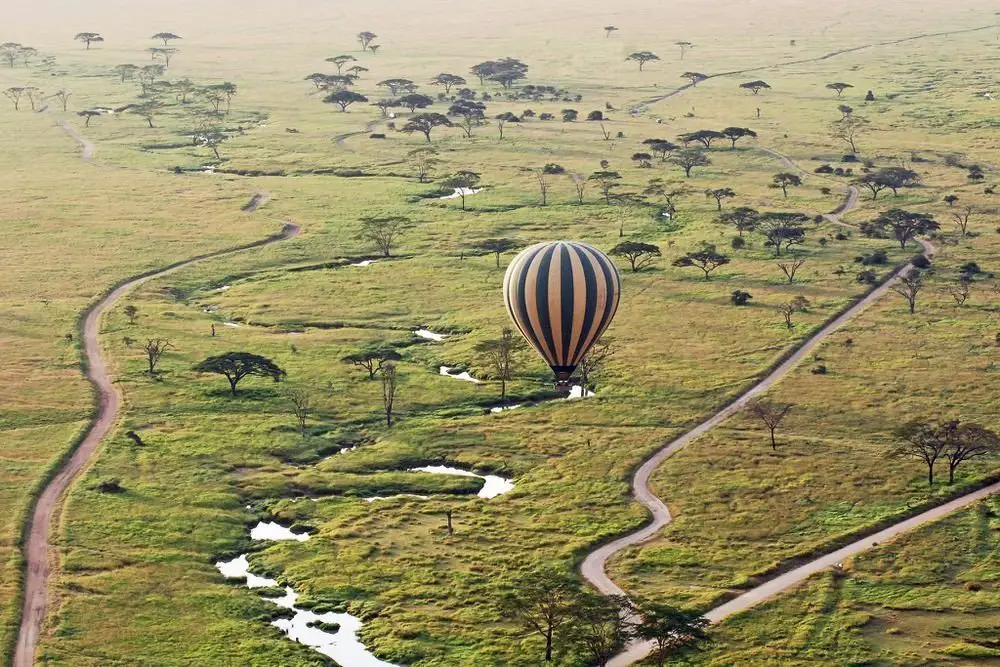



Its always interesting to hear a different perspective from a foreigner like you..im born and raised Kenyan so ive gotten used to this place..
The other day i read an account of an Australian who was NOT overly impressed by Nairobi saying how much pollution is in this place..
I wonder what that Aussie would think of Beijing because I can assure her it’s 100x worse than Nairobi. Having traveled to much of Africa, Nairobi was similar to other places in the region. Just think people need to change their outlook. You’re not going to find a long lost Paris, but rather an up and coming city that is rapidly developing with huge disparities between the poor and rich areas.